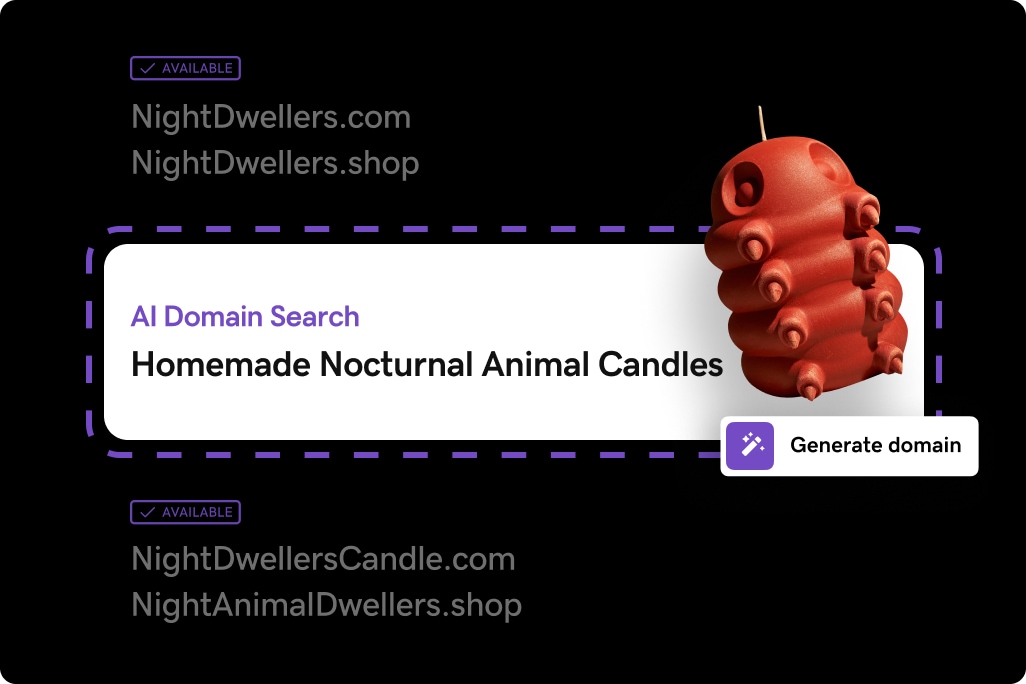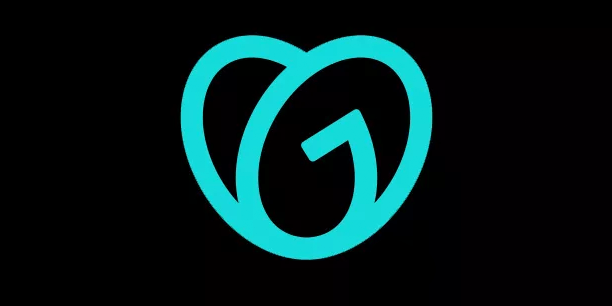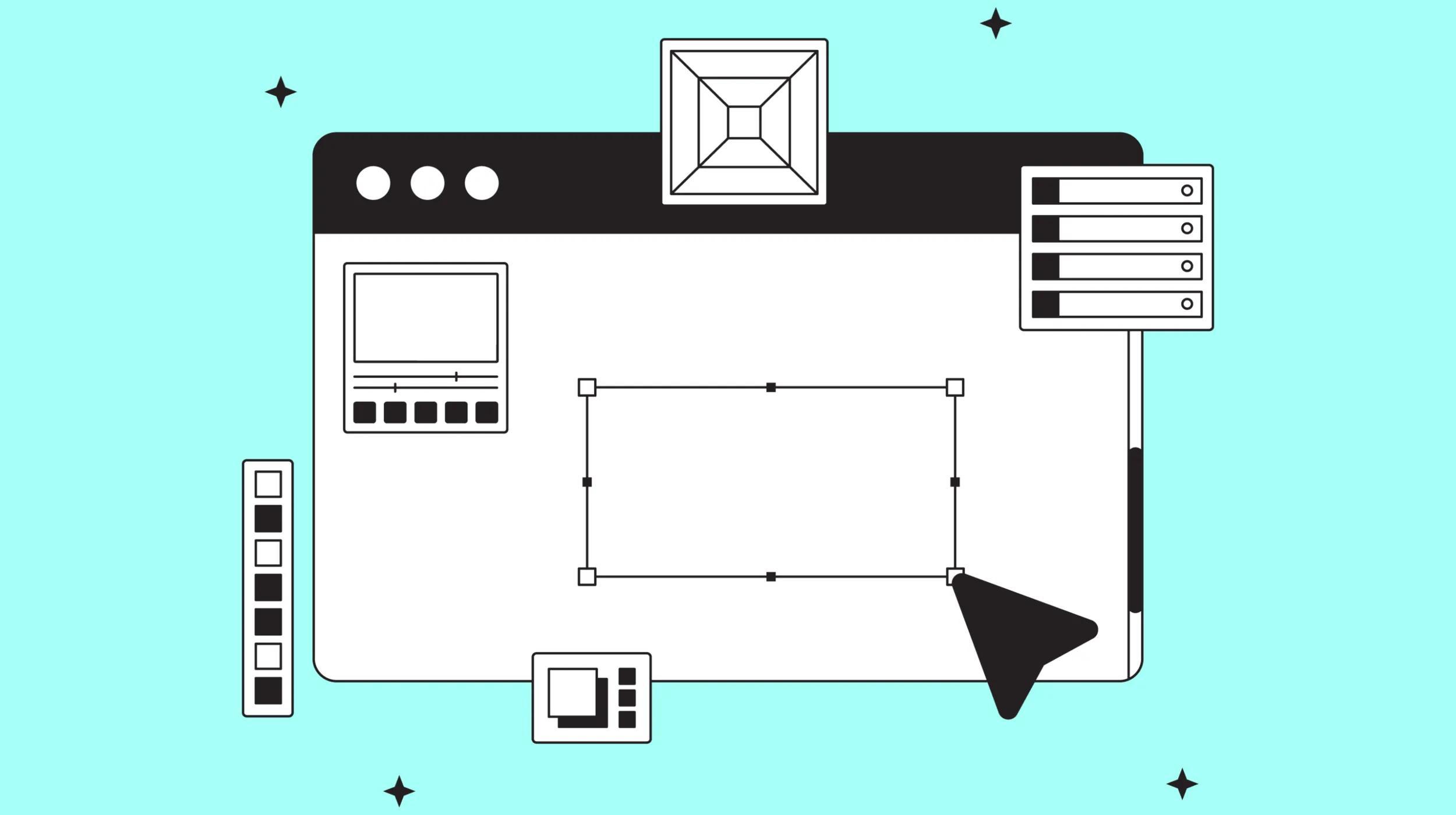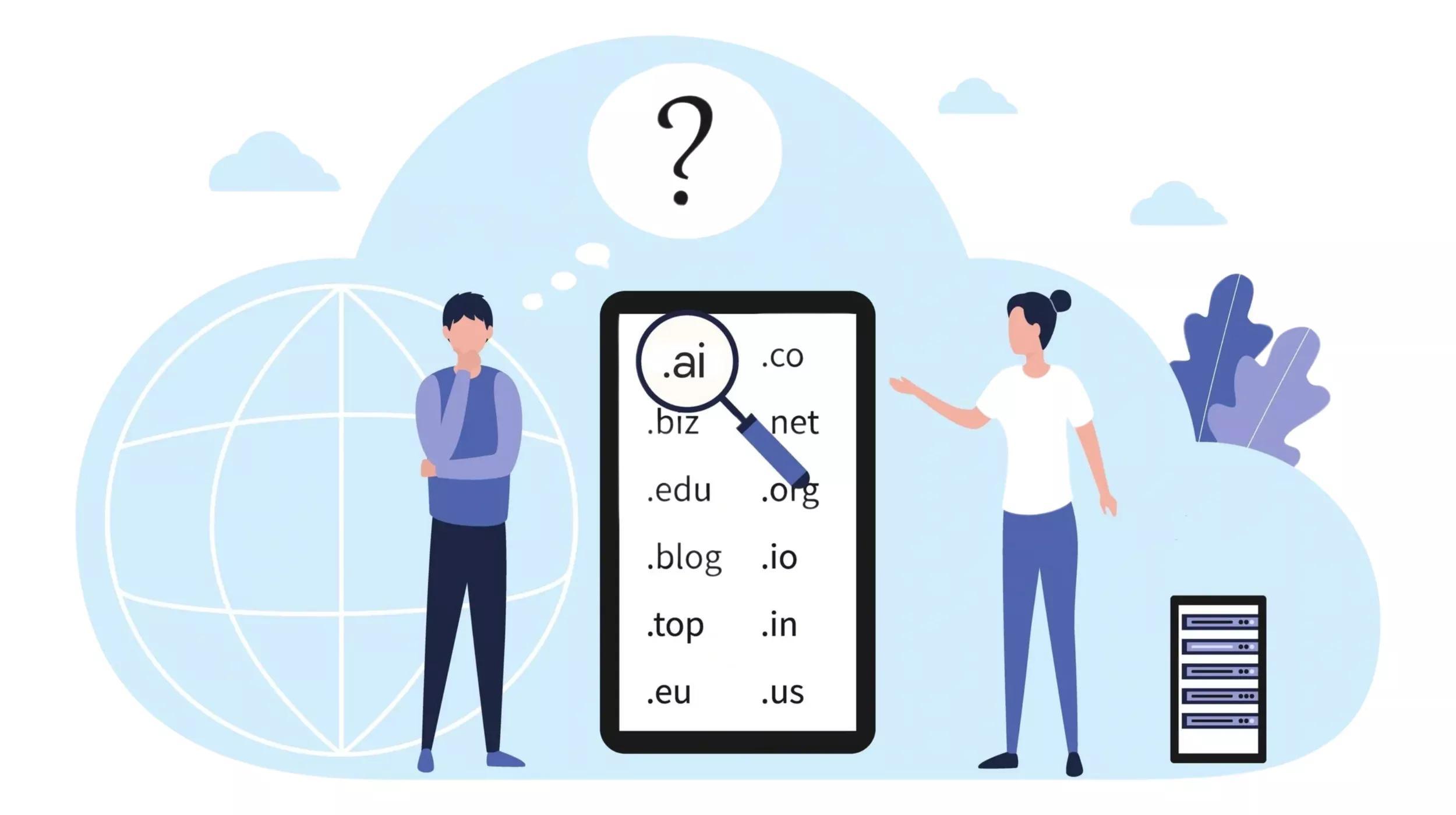Every website begins with a domain name, and behind every domain is a history worth knowing. From its first registration to changes in ownership, a domain’s past can reveal valuable insights.
As of early 2025, there are more than 368 million top-level domain (TLD) registrations worldwide, and thousands of them change hands each day. With so much activity, checking domain history before you invest in or use a domain name is a smart move.
Looking into a domain’s ownership history or running a domain history lookup can help you avoid surprises, protect your brand, and make confident decisions about your online presence. Let’s walk through what domain history is, why it matters, and how to find a domain’s history before committing to it.
What is domain history?
Domain history is the record of a domain’s ownership, website content, and reputation over time. It shows who has registered the domain in the past, how often it has changed owners, and the types of websites or businesses that have been connected to it.
Reviewing this information can uncover valuable context about whether a domain has been used consistently, left inactive, or linked to activity that could affect its credibility. In essence, domain history helps you determine whether buying a specific domain name is worthwhile.
Why domain history matters more than ever
With millions of domains being bought, sold, and resold each year, understanding a domain’s past has never been more important. Search engines are becoming stricter about quality and trust, and brand reputation is closely tied to the domains you use. A clean domain history ensures that the name you’re building on hasn’t been linked to questionable activity.
Issues like spam associations, blacklisting, legal disputes, or poor SEO performance can all stem from a domain’s past. Checking domain registration history before making a purchase helps you avoid these risks. If you’re exploring your options, check out this guide to finding expiring domain names.
Related: When do domains expire?
Why checking domain history is critical for modern buyers
While finding the right domain can feel like a win, what happened to that name in the past could influence how well it works for you in the future. Checking domain history isn’t required, but it’s one of the first, most important steps in growing a credible, sustainable brand.
Protects brand reputation
Your domain is often the first impression people have of your business. If its past is tied to spam, scams, or low-quality websites, that history may still show up in search results or influence how search engines rank it.
Reviewing domain ownership history before buying reduces the risk of inheriting a reputation that doesn’t reflect your brand values. It helps you start with a clean slate rather than spending time and resources repairing damage caused by previous owners.
Avoids legal pitfalls
Domains sometimes carry baggage in the form of trademark conflicts, disputes, or questionable registrations. If a domain has been linked to another business in a protected industry, buying it could expose you to legal challenges. Looking into domain registration history gives you a chance to walk away before investing in something that could lead to expensive legal headaches.
Gain a competitive advantage
Domains with a strong, trustworthy background can give you an edge in search rankings and customer trust. A clean domain name history means fewer SEO setbacks, faster indexing, and greater credibility with your audience.
Competitors who skip this step may end up working harder to build authority, while you benefit from a domain that search engines and users already view positively.
Domain flipping
Knowledge is profit for investors. If you’re flipping domains, understanding their full history helps you determine fair value and potential resale opportunities. A domain history lookup can reveal whether the name has ever been tied to premium content, high traffic, or past sales, giving you insight into its earning potential.
This information makes it easier to spot undervalued domains and avoid ones with issues that could undermine your investment.
Related: How to sell domains for profit
Tools for domain history research
Checking domain history isn’t a one-step process. Each tool you use uncovers a different piece of the puzzle, from ownership records to archived site content and security reputation. Relying on just one source can leave gaps, but combining several gives you a fuller picture of a domain’s past. Below are the top tools you can use to research a domain.
WHOIS lookup and WHOIS history
WHOIS data is the starting point for understanding a domain’s registration details. It shows you who registered the domain, when it was created, and when it expires. Historical WHOIS records reveal how ownership may have changed over time.
You can use GoDaddy’s WHOIS Domain Lookup to check current records, or read this article on WHOIS changes for more information. These tools are especially useful for spotting frequent transfers, which could indicate a less stable history.
Wayback Machine and web archives
If you want to see how a website connected to a domain looked in the past, the Internet Archive’s Wayback Machine is the go-to resource. It stores snapshots of websites over time to show their past content, design, and activity.
Alternative archives like Archive.today can also help fill in the gaps, especially if certain snapshots are missing. These tools make it easier to spot whether a domain was previously used for legitimate businesses, spammy content, or practices that could affect your reputation.
Domain research platforms
Advanced domain research platforms like DomainIQ, DomainTools, SEMrush, Moz, and Ahrefs offer a more comprehensive view of a domain’s background. These platforms can show historical ownership records, backlink profiles, and SEO performance trends.
They’re particularly valuable if you want to know how a domain might perform in search engines or whether it carries the weight of toxic backlinks.
Tools like these are also helpful when evaluating potential risks associated with domain squatting or inflated resale values.
Security and blacklist checkers
Even if a domain looks clean on the surface, it may be flagged by security tools or blacklisted for spam or malicious activity. Running the name through services like Norton Safe Web, Google Transparency Report, and Sucuri SiteCheck can help you spot potential risks.
These tools scan for malware, phishing, and other issues that could hurt your website’s credibility or block you from ranking in search. If a domain is blacklisted, it can take time and resources to restore trust, so it’s always worth checking before making a purchase.
Social media and online forums
Sometimes the best insights come from the communities that track and discuss domain names. Platforms like Reddit, X, and industry forums can reveal whether a domain has a reputation—good or bad—among buyers, investors, or businesses.
Checking these channels can help you uncover patterns of abuse, rumors of legal disputes, or even opportunities to connect with past owners. It’s a more informal approach, but it adds another layer of perspective to your research.
AI-based domain history analysis tools
AI is becoming a valuable addition to domain research. Emerging tools use machine learning to combine data from WHOIS, archives, backlinks, and reputation checks into an easy-to-understand profile.
These tools can highlight risks you might miss on your own, like unusual patterns in ownership transfers or suspicious spikes in backlinks. AI domain history analysis tools are newer and still being refined, but they are powerful supplements to traditional research methods.
How to audit a domain’s past like a pro – step-by-step guide
Every domain name has a backstory, and understanding it can save you time and money in the long run. A domain audit shows you a domain’s full history before you buy it so you’re better equipped to decide whether it’s the right fit for your business or brand. Domain history audits may seem complex, but they can be done in four simple steps.
1. Review ownership, content, and reputation timeline
Start by reviewing the domain’s ownership history to see who has held it over time and how often it has changed hands. Pair that with tools like the Wayback Machine to check past website content and activity.
This timeline helps you understand whether the domain was used for reputable purposes or tied to spammy or misleading content that could impact its credibility.
2. Do an SEO and backlink audit: Using multiple tools for cross-validation
Backlinks are a major factor in how a domain performs in search. Use SEO tools like SEMrush, Moz, or Ahrefs to see what kind of sites link to the domain. Cross-validate results with more than one tool to spot toxic backlinks or suspicious spikes in link activity.
A domain with high-quality backlinks is much easier to build on than one weighed down by poor SEO signals.
3. Check security and blacklist status
A domain may look fine at first, but it might be blacklisted for spam, malware, or phishing. Running real-time scans with services like Google Transparency Report, Norton Safe Web, or Sucuri SiteCheck can alert you to hidden issues. If a domain is flagged, you’ll know upfront whether the extra effort to restore trust is worth it.
4. Consider legal and trademark issues
Don’t overlook potential legal risks. Domains that overlap with registered trademarks can lead to disputes, takedown requests, financial penalties, and more.
Before you buy, research whether your domain name could infringe on existing rights. Once you’ve secured the right one, consider trademarking your domain to protect yourself and your brand.
How to interpret domain history results
Running a domain history check is only helpful if you understand what the results mean and how to determine whether investing in a specific domain is worthwhile. Not all issues are dealbreakers, but some can seriously impact your brand, your search visibility, or even your legal standing.
Common red flags to watch for
Certain patterns in a domain’s past should immediately raise concerns. Signs of spam activity, malware distribution, or association with phishing schemes can hurt your reputation and block your site from ranking in search engines. A history of being blacklisted or penalized by search engines is another major problem because recovery can be costly and time-consuming.
Abuse complaints or frequent ownership transfers may also indicate instability. While none of these issues mean you can’t buy the domain, they are warning signs that require closer consideration.
Assessing SEO and backlink quality
A strong backlink profile can add value to a domain, while a toxic one can drag it down. If your audit shows the domain has links from reputable, relevant sites, that’s a positive sign. On the other hand, large numbers of low-quality or spammy backlinks could signal trouble.
It’s important to weigh whether you have the resources to clean up a bad profile. In some cases, poor SEO history can follow a domain for years and make it harder to build new authority even with high-quality content.
Evaluating reputation and brand impact
Choosing a domain name isn’t all about the technical aspects. You should think about how the domain’s history aligns with your brand goals. If past content was controversial, misleading, or connected to industries you don’t want your business associated with, the baggage may outweigh the benefits. A clean domain name history builds trust faster with your audience, while a questionable one may require extra effort to re-establish credibility.
Deciding when to walk away
Not every domain is worth the risk. If the history reveals repeated blacklisting, unresolved legal disputes, or an SEO profile that’s beyond repair, it’s often better to walk away. Even if a domain seems like a perfect fit in name, the long-term costs of overcoming a bad history can outweigh the initial benefits.
Setting up domain monitoring for ongoing protection
Buying a domain is just the beginning. Once it’s yours, keeping an eye on its health is key to protecting your investment and maintaining trust with your audience. Regular domain monitoring makes it easier to identify issues before they affect your website, search performance, or brand reputation. Stay on the lookout for:
- Blacklists: Get alerts if your domain is flagged for spam, phishing, or malware.
- Reputation changes: Track how your domain is viewed by search engines and security services over time.
- Ownership and registration: Monitor for unexpected changes in WHOIS records that could indicate errors or attempts at unauthorized transfer.
- SEO health: Keep tabs on backlinks and rankings to catch sudden drops that may signal hidden issues.
Invest wisely: Checking your domain's history ensures your brand’s future
A domain name is the foundation of your online presence. Taking time to research domain history, review ownership records, and monitor ongoing activity helps you avoid risks and grow confidently.
Having the right tools on hand can make securing the perfect domain easier. Use GoDaddy’s domain name generator for help crafting the right fit, the domain search tool to check if your name is available, or the WHOIS lookup to perform domain history research before buying.
Frequently Asked Questions
Why do I need to check my domain history?
Checking domain history helps you see the full picture before committing to a domain name. Past ownership, website content, and reputation can all influence how the domain performs for you today. A quick check can uncover risks like spam, blacklisting, or trademark disputes that may not be obvious at first.
Can I check a domain's ownership history for free?
Yes, you can check a domain’s ownership history for free using tools like GoDaddy’s WHOIS lookup. However, historical records often require specialized tools or paid platforms. Using a mix of free and paid resources gives you a clearer view of domain ownership history and helps you spot important patterns, like frequent transfers or expired registrations.
Why isn’t WHOIS enough for a domain history?
WHOIS data is valuable, but it only shows you the current registration details. It won’t reveal how the domain was used in the past, what kind of websites were tied to it, or whether it was ever blacklisted. To understand a domain’s full story, you’ll need to combine WHOIS with other tools such as archives, SEO platforms, and security checkers.
Can I improve a domain’s reputation if I already bought a domain with a bad history?
Yes, but it takes work. Cleaning up spammy backlinks, resolving blacklist issues, and rebuilding trust with search engines can be a long process. In some cases, recovery is possible with consistent effort and high-quality content. In others, the damage may be too severe, and walking away could be the smarter option.







